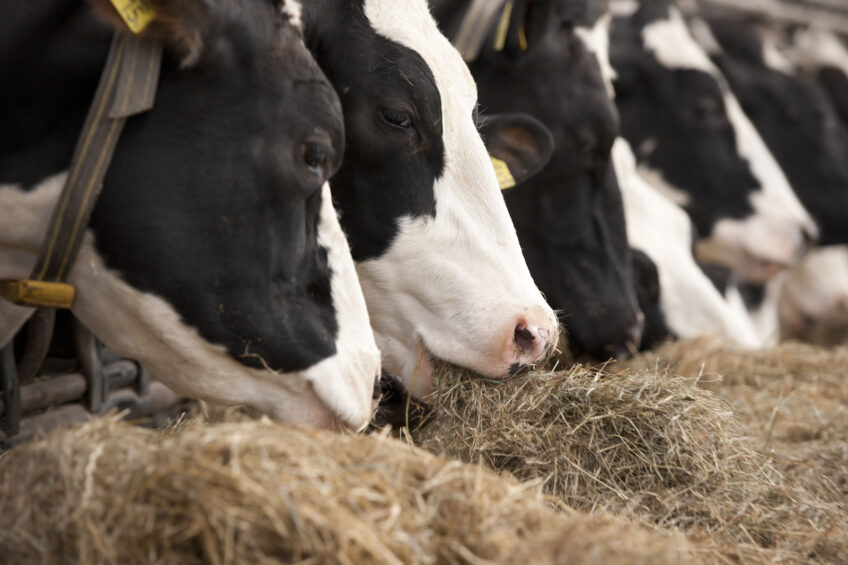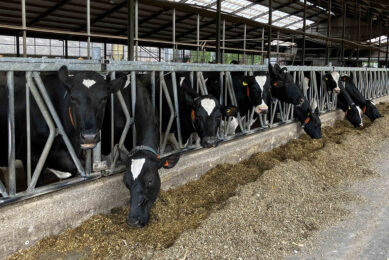Amino acid nutrition key for dairy cows

The importance of optimising the supply of amino acids (AA) to improve protein utilisation, increase milk production and milk solids is an industry game changer in a highly competitive market. This topic was further discussed at a recently held Kemin meeting in Paris.
Efficient feed management helps ensure all animal nutritional requirements are met. During ration formulation, nutritionists look at common parameters such as energy, starch, fibre, crude protein, minerals and vitamins. However, these bigger pieces of a puzzle don’t take into account the rising cost of protein sources or how protein degradation takes place in the rumen. One of the best ways to improve protein utilisation efficiency is by the effective management of the AA profile. The implementation of dairy amino acid balancing is straightforward and the animal’s response and benefits are immediately visible for the dairy farmer. This has been confirmed by the fast adoption curve of dairy farmers who have implemented the concept of amino acid balancing in Europe and North America.
Amino acids are the building blocks of protein
Dr Charles Schwab, professor emeritus at the University of New Hampshire challenged the audience with his opening quote, “Crude protein is a parameter that blinds our eyes and does not allow the dairy industry to progress. Traditionally dairy nutritionists have looked mainly at rumen-degradable protein (RDP) and rumen-undegradable protein (RUP) levels when formulating diets. The first one is required by the rumen microorganisms for their own protein synthesis while the second one compliments RDP on cow requirements. However, one should always remember that amino acids (AA) are the building blocks of protein and that the supply of both sources should meet the requirements on essential AA for optimal animal performance. Monogastric nutritionists have long understood this concept of amino acid balancing and we as dairy nutritionists should not miss this call!”
Dr Schwab reviewed the methionine (Met) and lysine (Lys) levels of different feed raw materials and the research which confirms that Met and Lys are the first two limiting AA in milk production. The ideal ratio between Lys and Met should be 3:1 to maximise milk protein output. One of the newest technologies that can help achieve this balancing strategy is rumen-protected amino acids.
Link nutrition and reproduction in cattle
Furthermore, Dr Milo Wiltbank, a professor of Reproductive Physiology at the University of Wisconsin-Madison in the US, discussed the link between nutrition and dairy cattle reproduction. Dr Wiltbank presented novel research which established the link between the supplementation of Met and fertility. His studies found a reduction in pregnancy loss of 13.5% when Smartamine M was supplemented, in addition to a significantly larger embryo size. During his session, Dr Wiltbank also presented information on how a subtle increase of Met in the maternal diet caused notable changes in the transcriptome of preimplantation embryos. These findings support the idea that oocyte maturation, fertilisation, and preimplantation embryonic development are particularly sensitive periods to changes in maternal nutrition and many of the most significantly altered genes are associated with early embryo development. As part of his conclusion, Wiltbank pointed out that research confirms elevated crude protein levels in the diet will result in high levels of urea nitrogen in blood, which is associated with reduced fertility in lactating dairy cows.
AA requirements can be set in every model
Dr Angela Schröder, technical service manager for the animal nutrition and health division at Kemin compared four North-West European AA evaluation systems for the calculation of the metabolisable Met and Lys contributions with special focus on the Dutch and German systems which do not have or underestimate AA recommendation. She concluded that even though some systems do not have official recommendations, the AA requirements can be set by utilising the proven trials presented in scientific articles and other models such as the INRA (Institut national de la recherche agronomique) and NRC (National Research Council). Therefore, AA formulation is applicable under very different system taking full advantage of feed efficiencies and proper nutrition.
AA balancing showing fast adaption in market
The experts all concluded that amino acid balancing of dairy rations is showing a fast adoption in the market. The benefits of amino acid balancing are clear and include improved dairy performance, improved fertility, reduced greenhouse gas and overall profitability. During this seminar, attendees had access to practical day to day examples, trial data and multiple nutritional tools which they could take home and implement in their day to day operations.










